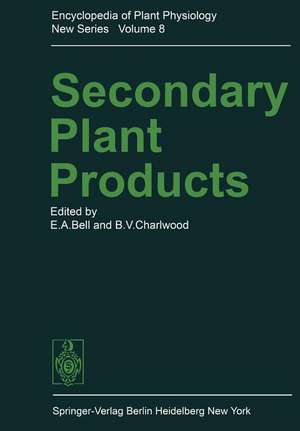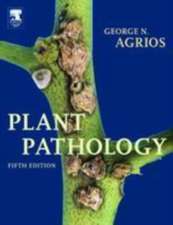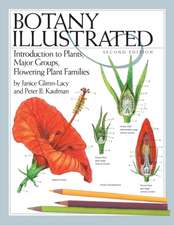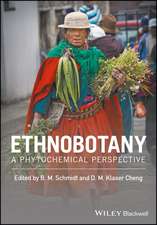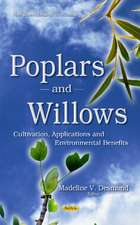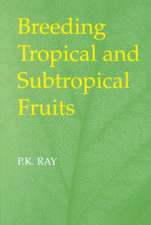Secondary Plant Products: Encyclopedia of Plant Physiology, cartea 8
Editat de E. A. Bell, B. V. Charlwooden Limba Engleză Paperback – 15 noi 2011
Din seria Encyclopedia of Plant Physiology
- 18%
 Preț: 962.49 lei
Preț: 962.49 lei - 18%
 Preț: 965.34 lei
Preț: 965.34 lei - 18%
 Preț: 971.81 lei
Preț: 971.81 lei - 18%
 Preț: 974.67 lei
Preț: 974.67 lei - 18%
 Preț: 966.15 lei
Preț: 966.15 lei - 15%
 Preț: 678.68 lei
Preț: 678.68 lei - 15%
 Preț: 670.17 lei
Preț: 670.17 lei - 18%
 Preț: 973.06 lei
Preț: 973.06 lei - 15%
 Preț: 670.30 lei
Preț: 670.30 lei - 15%
 Preț: 650.37 lei
Preț: 650.37 lei - 15%
 Preț: 653.46 lei
Preț: 653.46 lei - 15%
 Preț: 657.25 lei
Preț: 657.25 lei - 15%
 Preț: 644.49 lei
Preț: 644.49 lei - 15%
 Preț: 676.86 lei
Preț: 676.86 lei - 15%
 Preț: 652.49 lei
Preț: 652.49 lei - 18%
 Preț: 976.72 lei
Preț: 976.72 lei - 15%
 Preț: 668.68 lei
Preț: 668.68 lei - 15%
 Preț: 656.25 lei
Preț: 656.25 lei - 15%
 Preț: 672.43 lei
Preț: 672.43 lei - 15%
 Preț: 653.98 lei
Preț: 653.98 lei - 15%
 Preț: 656.43 lei
Preț: 656.43 lei - 15%
 Preț: 676.86 lei
Preț: 676.86 lei - 18%
 Preț: 971.32 lei
Preț: 971.32 lei - 15%
 Preț: 665.26 lei
Preț: 665.26 lei
Preț: 967.88 lei
Preț vechi: 1180.34 lei
-18% Nou
Puncte Express: 1452
Preț estimativ în valută:
185.20€ • 193.89$ • 153.24£
185.20€ • 193.89$ • 153.24£
Carte tipărită la comandă
Livrare economică 07-21 aprilie
Preluare comenzi: 021 569.72.76
Specificații
ISBN-13: 9783642673627
ISBN-10: 3642673627
Pagini: 696
Ilustrații: XVI, 674 p.
Dimensiuni: 170 x 244 x 37 mm
Greutate: 1.09 kg
Ediția:Softcover reprint of the original 1st ed. 1980
Editura: Springer Berlin, Heidelberg
Colecția Springer
Seria Encyclopedia of Plant Physiology
Locul publicării:Berlin, Heidelberg, Germany
ISBN-10: 3642673627
Pagini: 696
Ilustrații: XVI, 674 p.
Dimensiuni: 170 x 244 x 37 mm
Greutate: 1.09 kg
Ediția:Softcover reprint of the original 1st ed. 1980
Editura: Springer Berlin, Heidelberg
Colecția Springer
Seria Encyclopedia of Plant Physiology
Locul publicării:Berlin, Heidelberg, Germany
Public țintă
ResearchCuprins
1 Historical Introduction.- References.- 2 The Possible Significance of Secondary Compounds in Plants.- 1 Introduction.- 2 Phylogenetic Significance.- 3 Ecological Significance.- References.- 3 Expression and Control of Secondary Metabolism.- 1 Introduction: Expression of Secondary Metabolism — a Feature of Cell Specialization.- 2 Regulation of Enzyme Amount in Secondary Metabolism.- 3 Regulation of Enzyme Activity.- 4 Compartmentation as Principle of Control in Secondary Metabolism.- 5 Integration of Secondary Metabolism in Programs of Differentiation and Development.- 6 Some Speculations About the Evolution of the Control Mechanisms in Secondary Metabolism.- 7 Summary.- References.- 4 The Alkaloids.- 4.1 Alkaloids Derived from Ornithine, Lysine, and Nicotinic Acid.- 4.2 Alkaloids Derived from Phenylalanine and Tyrosine.- 4.3 Alkaloids Derived from Tryptophan and Anthranilic Acid.- 4.4 Alkaloids Derived from Histidine and Other Precursors.- 4.5 Isoprenoid Alkaloids.- 5 The Isoprenoids.- 5.1 The Terpenoids.- 5.2 Steroids.- 5.3 Carotenoids.- 5.4 Polyisoprenoids.- 5.4.1 Polyprenols and Terpenoid Quinones and Chromanols.- 5.4.2 Polyisoprene.- 6 Plant Phenolics.- 7 Non-Protein Amino Acids in Plants.- 8 Plant Amines.- 9 Cyanogenic Glycosides.- 10 Glucosinolates.- 11 Betalains.- 12 Plant Lipids of Taxonomic Significance.- 13 Plant Carbohydrates.- Author Index.- Species Index.
